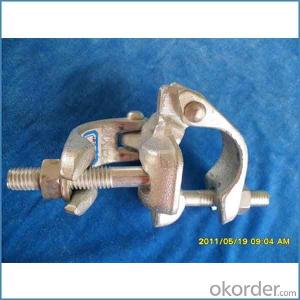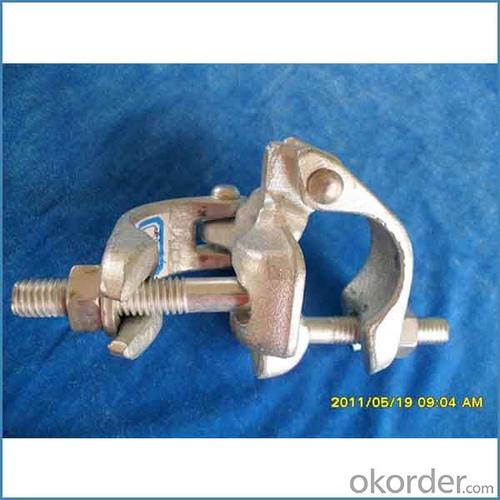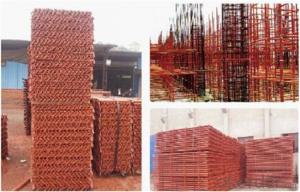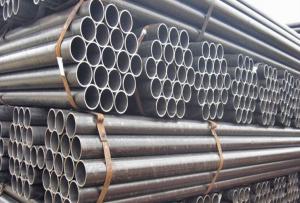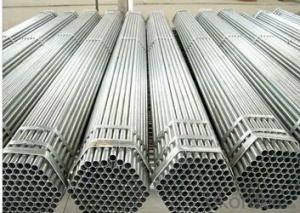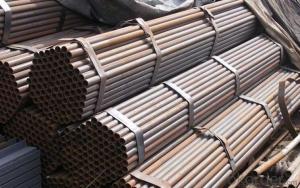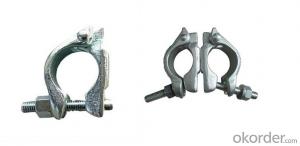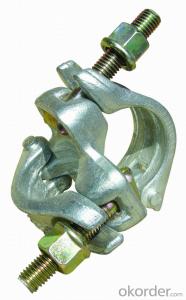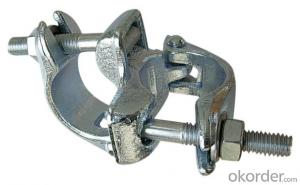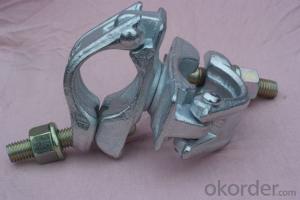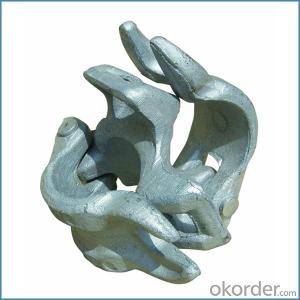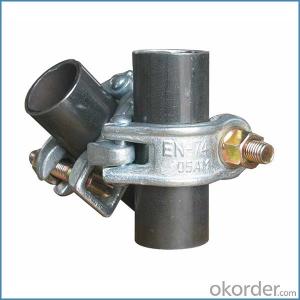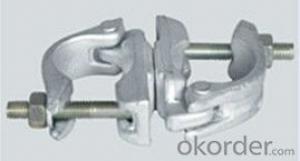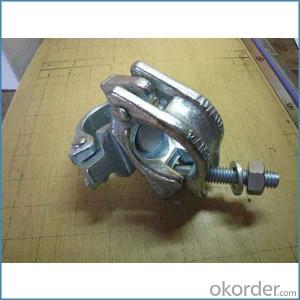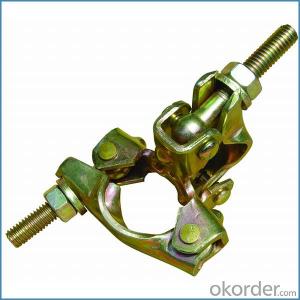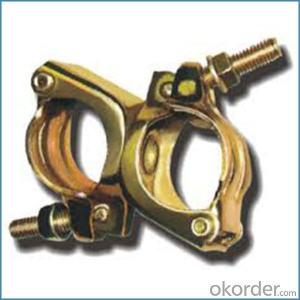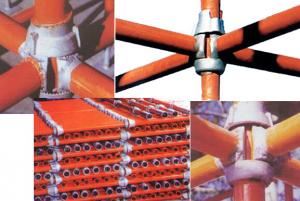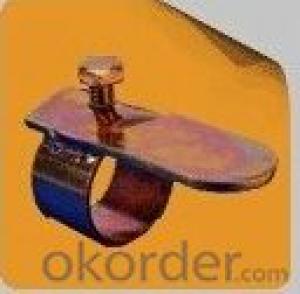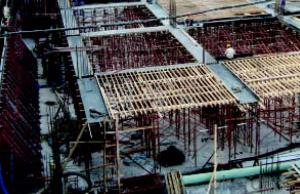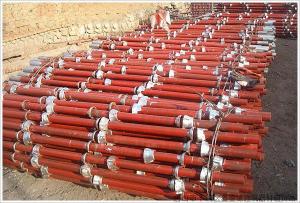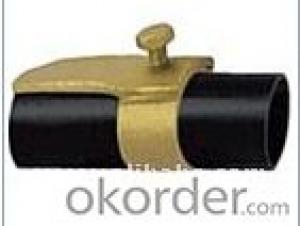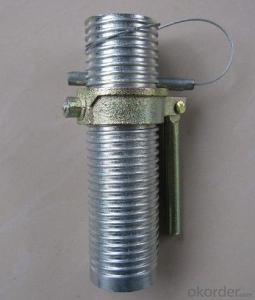Bs1139 Scaffolding Swivel Coupler British Type for Sale
- Loading Port:
- Tianjin
- Payment Terms:
- TT OR LC
- Min Order Qty:
- 100 kg
- Supply Capability:
- 100000 kg/month
OKorder Service Pledge
OKorder Financial Service
You Might Also Like
Bs1139 Scaffolding Swivel Coupler British Type for Sale
Description
1.The scaffolding coupler is always used to connect the steel pipe as scaffolding system.
2.The often used coupler is swivel coupler and righ angle coupler .
3.We can provide types of scaffolding coupler according to your requirement.
4.Couoler can fix the 48.3mm scaffolding steel pipe tightly and make the whole scaffolding system more steadily.
5.Material:Q235 steel
6.Overall Size:48.3mm*48.3mm
7.Surface Finish: Galvanized/ Painted
8.Standard:BS1139,EN74
9.Package:25pcs/bag
10.Manufactuering as per customer requirements
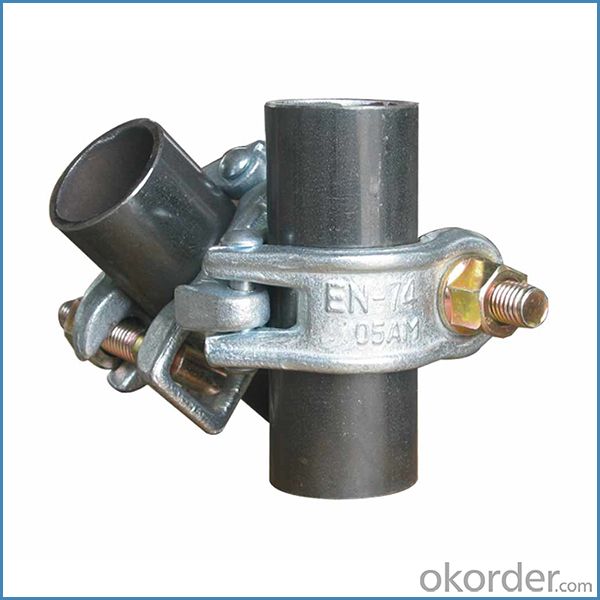
Feature
(1)Excellent Anti-Breaking—Cold Pressed Steel
(2)Outstanding Resistance Deformation
(3)Strong Anti-Dropping Ability
(4)Longtime USe
(5)Qualtity Guaranteed
(6)OEM Service
Photo
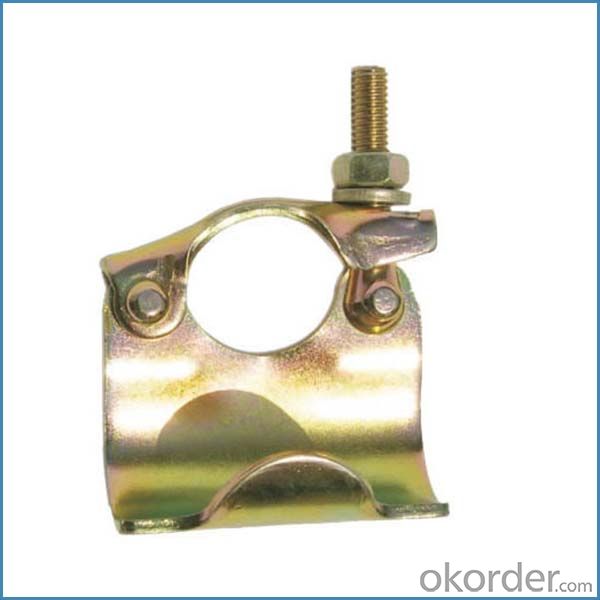
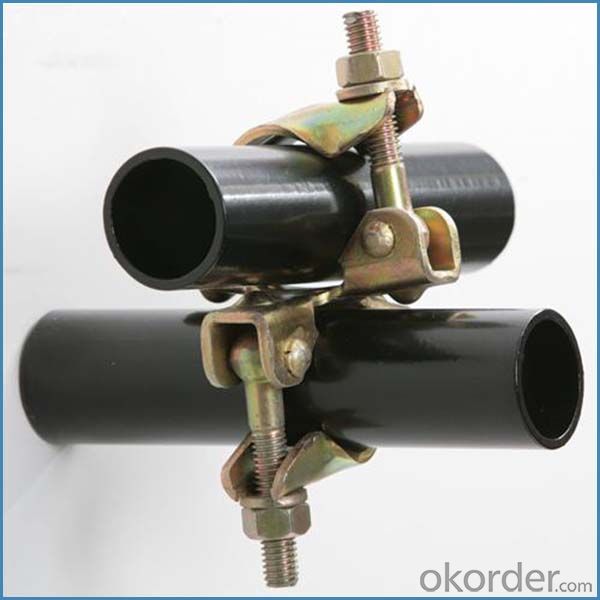
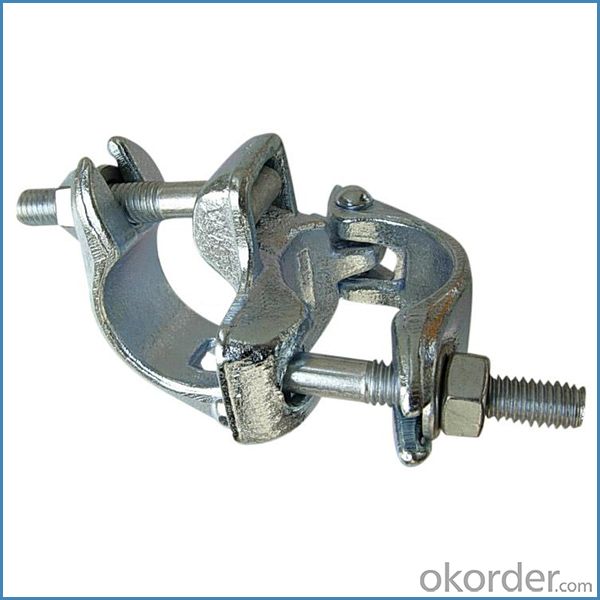
Parameter
| Material | Q235,345steel |
| Size | 48.3mm*48.3mm |
| Surface finish | Galvanized |
| Weight | 1.1kg around |
| Standard | BS1139,EN74 |
| Package | 25pcs/bag,steel pallet |
| Manufacture | As per customer requirement |
| Market | Africa, South America, the Middle East and Asia |
FAQ
Q: Are you a factory or trading company?
We are a state-owned corporation in China,dealing with various kinds of building materials.We have our holding subsidiaries.
Q: Where is your factory located? How can I visit there?
Our factory is located all around China.
Q: Can I get some samples?
Sample is free, customer only pay freight for the first time.
Q: Delivery?
10-30days. (5-15 containers)
Any question,feel free to contact us.
- Q: Can steel tube couplers be used in confined spaces or narrow scaffolding structures?
- Steel tube couplers have the ability to be utilized in confined spaces or narrow scaffolding structures. These couplers serve as a type of fitting that connects multiple steel tubes together. Typically employed in construction and scaffolding applications, they create a secure and stable structure. One of the key advantages of employing steel tube couplers lies in their versatility and adaptability. They can be arranged in various configurations and easily adjusted or repositioned to meet different requirements. Consequently, they are well-suited for use in confined spaces or narrow scaffolding structures where there may be limited working space. Furthermore, steel tube couplers are specifically designed to establish a strong and reliable connection between steel tubes. Manufactured from high-quality steel, they are constructed to endure heavy loads and harsh conditions. This guarantees the safety and stability of the scaffolding structure, even within confined or narrow spaces. However, it is crucial to acknowledge that when working in confined spaces or narrow scaffolding structures, it is imperative to take proper safety precautions. This includes ensuring that the scaffolding is correctly erected, utilizing appropriate fall protection equipment, and adhering to all relevant safety guidelines and regulations.
- Q: Are steel tube couplers compatible with scaffolding fall arrest systems?
- Scaffolding fall arrest systems cannot be used with steel tube couplers. Instead, these systems depend on specialized components like anchors, lifelines, and harnesses to ensure the safety of workers at high elevations. Steel tube couplers are primarily utilized in scaffolding to connect steel tubes and establish a stable structure. Although steel tube couplers are essential for scaffolding construction, they do not possess the necessary safety features required for fall arrest systems. Therefore, it is vital to employ the correct fall arrest equipment and components that are specifically designed for scaffolding fall protection in order to guarantee the safety of workers at elevated heights.
- Q: How do steel tube couplers affect the overall stability and rigidity of scaffolding platforms?
- Steel tube couplers play a crucial role in enhancing the stability and rigidity of scaffolding platforms. By securely connecting the steel tubes together, these couplers provide structural integrity to the entire scaffolding system. They ensure that the tubes remain firmly in place, preventing any wobbling or shifting. This stability and rigidity contribute to the safety and reliability of the scaffolding, allowing workers to perform their tasks confidently and efficiently without any concerns about platform stability.
- Q: So hi. Im 14 and i want to get my scaffold done . Dose it really hurt?And dose gettin your belly button hurtt to?I just really want to know about the scaffold ?
- What body part are you speaking about? A scaffold is a temporary platform, either supported from below or suspended from above, on which workers sit or stand when performing tasks at heights above the ground. Aside from that, your belly button and any other part of your body that is done (I presume you mean pierced) would cause pain.
- Q: Can steel tube couplers be used in scaffolding projects that require access through walls or openings?
- Yes, steel tube couplers can be used in scaffolding projects that require access through walls or openings. These couplers allow for secure and sturdy connections between steel tubes, allowing scaffolding to be easily maneuvered and adjusted to fit through narrow spaces or openings in walls. They provide a reliable solution for scaffolding projects that require access through walls or openings.
- Q: What are the typical material specifications for steel tube couplers?
- The typical material specifications for steel tube couplers include a high-quality steel composition, such as carbon steel or alloy steel, with specific requirements for tensile strength, yield strength, and elongation. Additionally, these couplers often have a protective coating or finish to enhance corrosion resistance and durability.
- Q: what did dimmesdale do?what was the result??
- uhm i dont know the exact two things that send Dimmesdale to the scaffold, but i know that he went there because he felt guilty for not standing up for Hester Prynne and making her show her sin alone when it was his sin too, and he feels that if he goes up to the scaffold he will be relieved of his guilt and will feel better.
- Q: Fastener type steel pipe scaffolding with wall pieces of what components
- Insulation materials: microporous insulation materials, nano-airgel materials, vacuum insulation board, high temperature paint to do the best cold insulation material is a rigid foam polyurethane
- Q: What are the typical material specifications for steel tube couplers used in scaffolding?
- The typical material specifications for steel tube couplers used in scaffolding vary depending on the specific requirements and regulations of different countries and industries. However, there are some common material specifications that are widely accepted and recommended. One of the most common material specifications for steel tube couplers used in scaffolding is the use of high-grade carbon steel. This type of steel is known for its strength, durability, and resistance to corrosion, making it well-suited for the demanding conditions of scaffolding applications. In terms of specific steel grades, couplers are often made from materials such as S235 or S355 steel, which are commonly used in construction and industrial applications. These grades offer a good balance between strength and weldability, ensuring the integrity and safety of the scaffolding structure. Additionally, steel tube couplers used in scaffolding should meet certain dimensional specifications. They are typically designed to fit specific tube sizes, such as 48.3mm or 60.3mm outer diameter tubes, which are commonly used in scaffolding systems. Furthermore, steel tube couplers should undergo rigorous testing and certification processes to ensure their compliance with relevant industry standards and regulations. These standards may vary depending on the country or region in which the scaffolding is used, but some commonly recognized certifications include EN74, BS1139, and ANSI/SSFI SC100-5/05. It is important for companies and individuals involved in scaffolding to consult the specific regulations and standards applicable in their area to ensure that the steel tube couplers used meet the required material specifications and safety standards.
- Q: What are the common challenges in using steel tube couplers in scaffolding?
- There are several common challenges that can arise when using steel tube couplers in scaffolding. Firstly, one challenge is ensuring proper installation and alignment of the couplers. The couplers need to be securely attached to the tubes and properly aligned to ensure stability and safety. This requires careful attention to detail and expertise in scaffolding assembly. Secondly, rust and corrosion can be a significant challenge when using steel tube couplers. Steel is susceptible to rust and if the couplers are not properly coated or maintained, they can deteriorate over time. This can compromise the integrity of the scaffolding structure and pose a safety risk. Regular inspection and maintenance, as well as using corrosion-resistant coatings, can help mitigate this challenge. Another challenge is the weight and size of the couplers. Steel tube couplers can be heavy and bulky, making them difficult to handle and transport. This can increase the time and effort required for scaffolding assembly and disassembly. Additionally, the weight of the couplers can put strain on the scaffolding structure, requiring careful consideration of load capacities and weight distribution. Additionally, compatibility with different tube sizes can be a challenge. Steel tube couplers come in various sizes to accommodate different tube diameters, but ensuring the right fit can be challenging. It is important to select couplers that are compatible with the specific tubes being used and to carefully follow manufacturer guidelines for installation. Lastly, cost can be a challenge when using steel tube couplers. Steel is generally more expensive than other materials used in scaffolding, such as aluminum or plastic. This can increase overall project costs, particularly for larger scaffolding structures. Overall, while steel tube couplers are commonly used in scaffolding due to their strength and durability, they come with their own set of challenges. Proper installation, maintenance, rust prevention, handling, compatibility, and cost considerations are crucial to ensuring safe and efficient scaffolding operations.
Send your message to us
Bs1139 Scaffolding Swivel Coupler British Type for Sale
- Loading Port:
- Tianjin
- Payment Terms:
- TT OR LC
- Min Order Qty:
- 100 kg
- Supply Capability:
- 100000 kg/month
OKorder Service Pledge
OKorder Financial Service
Similar products
Hot products
Hot Searches
